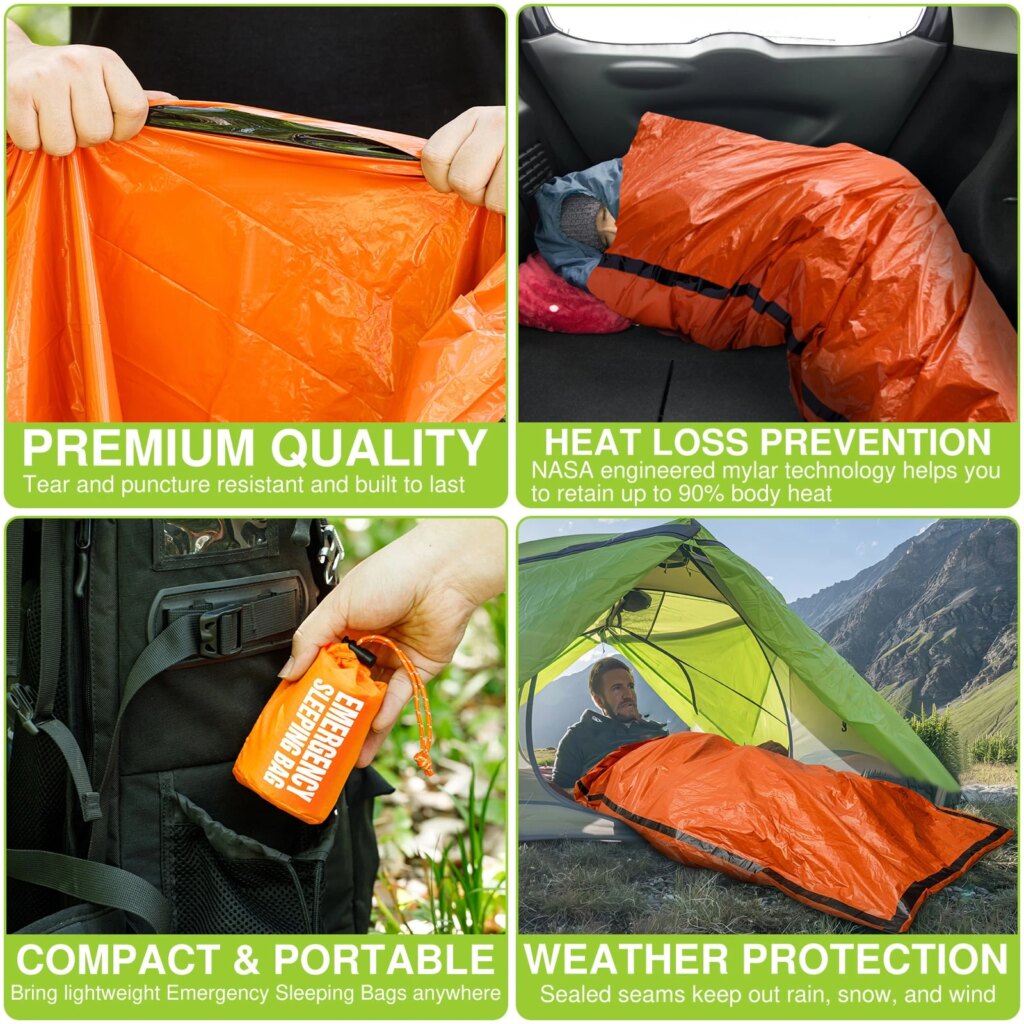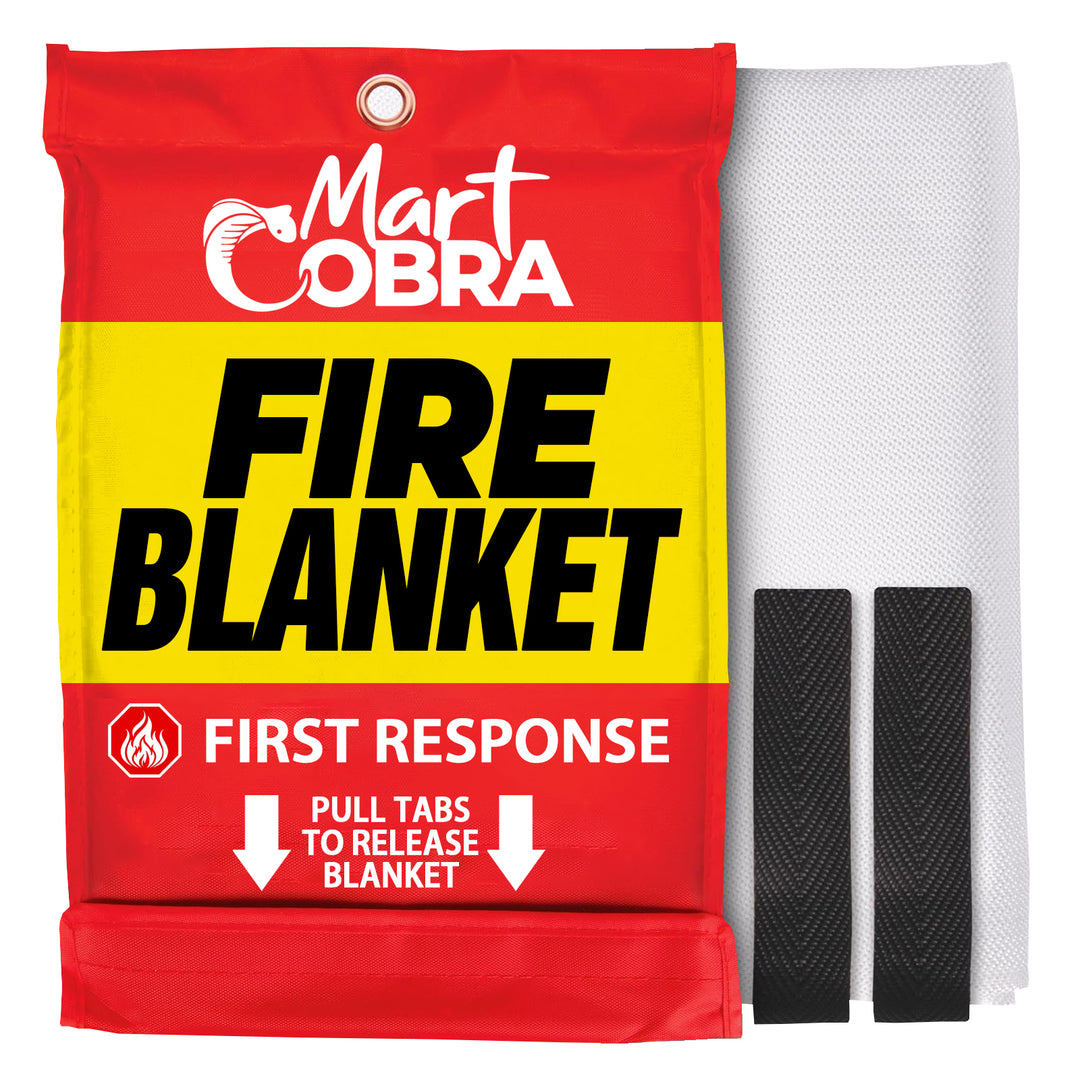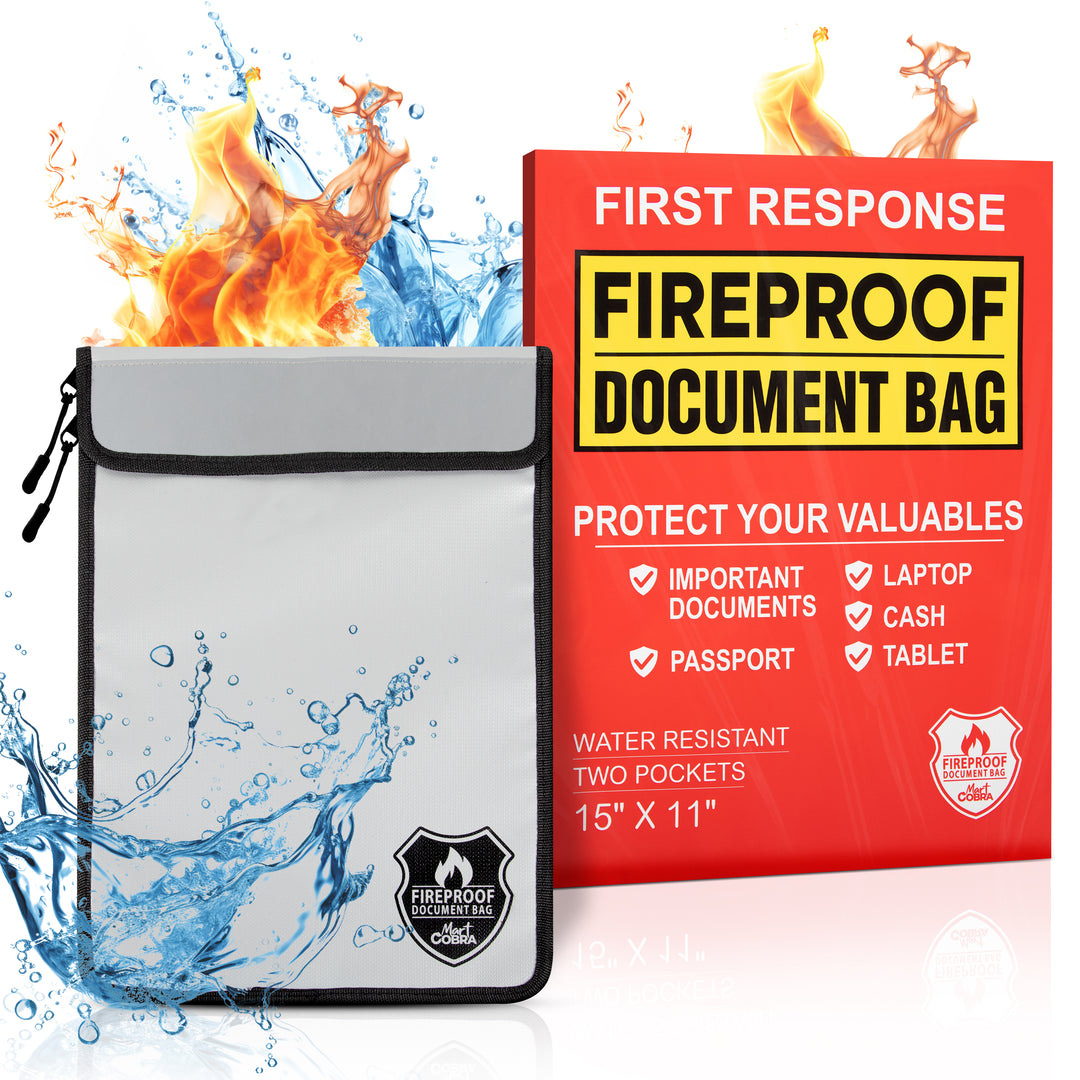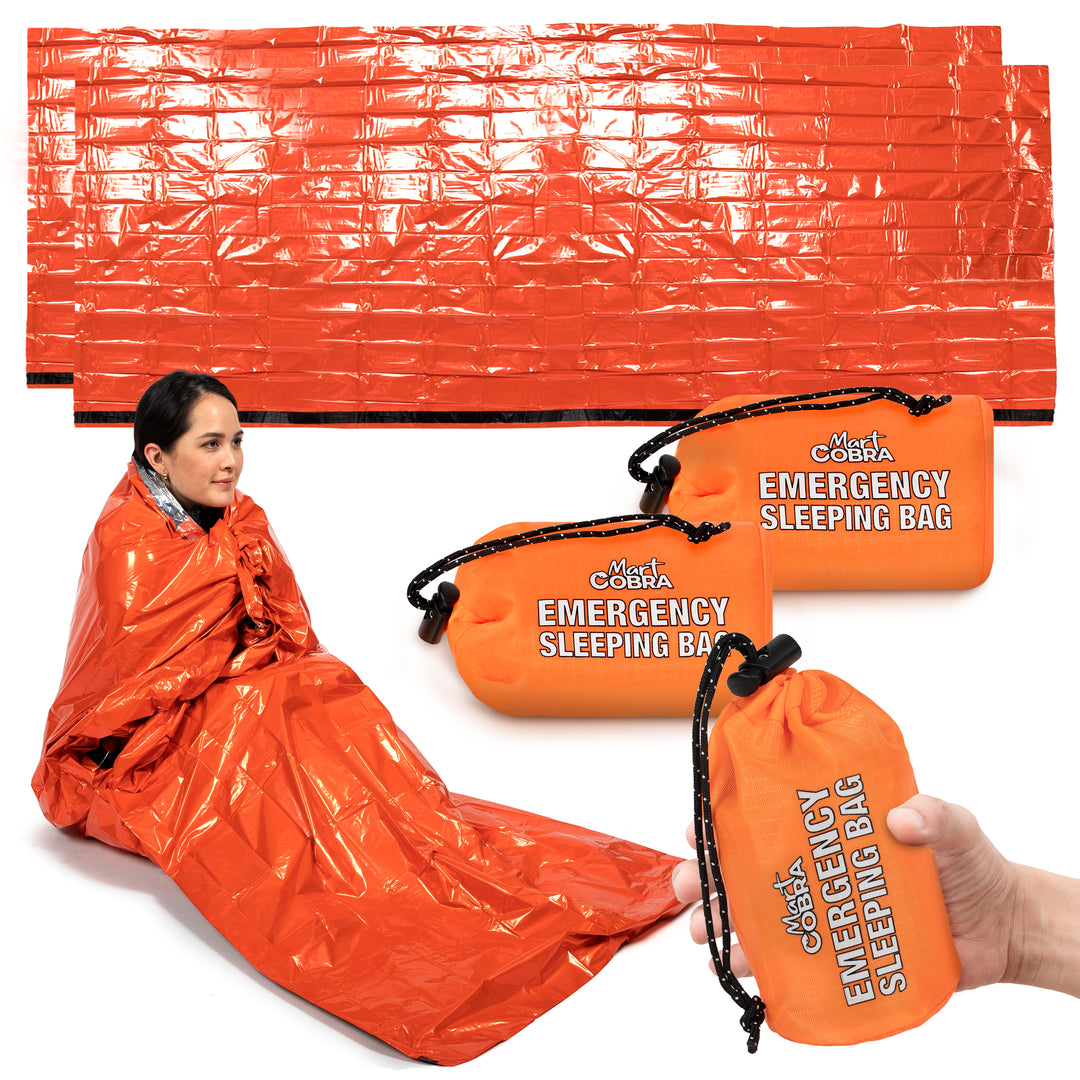When you think ofemergency sleeping bags, images of survival situations and harsh weather conditions might come to mind. These compact and lightweight lifesavers are essential components of any emergency kit, designed primarily to stave off hypothermia and keep you warm when the unexpected happens.
But did you know that these versatile tools have uses that extend far beyond emergencies?
In this blog post, we'll explore six surprising ways you can put an emergency sleeping bag to good use. Whether you're an outdoor enthusiast, an adventure traveler, or a survivalist, you'll find plenty of reasons to keep one of these handy emergency survival bags in your gear.



Why Include an Emergency Sleeping Bag in Your Kit?
Hypothermia Prevention
The primary purpose of an emergency sleeping bag is to preventhypothermia, which occurs when your body loses heat faster than it can generate it, resulting in dangerously low body temperatures. Crafted from materials that reflect body heat, these sleeping bags ensure you stay warm even in freezing conditions.Versatility in Emergency Situations
Apart from preventing hypothermia, emergency sleeping bags serve multiple functions in crises. As well as being compact, they are waterproof and can be used as a makeshift shelter, ground cover, or even a signal for rescue teams. The versatility of these sleeping bags makes them invaluable in survival situations, providing emergency protection and a range of solutions when you need them most.Peace of Mind
Having an emergency sleeping bag in your kit offers peace of mind. Knowing that you have a reliable, multipurpose tool at your disposal can make all the difference in how you handle unexpected challenges. It's an added layer of security that ensures you're prepared for various scenarios, from sudden weather changes to unforeseen delays in your travel plans.
The Versatility of Emergency Sleeping Bags
1. Maximizing Warmth with Sleeping Bags in Cold Weather
If you're camping in colder climates and the temperature drops, every bit of insulation can make a difference in your comfort and safety. One effective way to maximize warmth is by using a combination of sleeping bags. Place your emergency sleeping bag inside your regular sleeping bag to create layers. The reflective material in the compact sleeping bag conserves body heat by reflecting it back, while the outer bag provides extra insulation against the cold. This layered approach significantly enhances warmth, maintains body temperature, and ensures a good night's sleep even in sub-zero conditions. Another tip is to line the inside of your sleeping bag with anemergency blanket or even clothing, which can prevent heat from escaping. Additionally, using a sleeping pad or mat beneath your sleeping bag can protect you from the cold ground, but make sure your sleeping bag is dry, as wet material can quickly sap your body heat.2. Makeshift Shelter
Caught without a tent? Anemergency sleeping bag can be transformed into a makeshift shelter to protect you from natural elements. Here are some tips:- Find a Suitable Location: Look for a spot that offers some natural protection, such as the base of a tree, a rock formation, or a small hollow. This will help shield you from wind and rain.
- Unfold and Secure: Fully open the emergency sleeping bag and use rocks, branches, or other heavy objects to anchor the corners securely to the ground. This prevents the bag from blowing away and provides a stable base.
- Use a Ridgeline: If you have a cord or rope, create aridgeline between two trees or sturdy points. Drape the sleeping bag over the ridgeline to create a makeshift tent. This setup will allow rainwater to run off, keeping your shelter dry.
- Enhance Stability: For added stability, gather branches or large leaves to weigh down the sides of the sleeping bag. This will fortify the structure and prevent it from collapsing in windy conditions.
- Insulate the Ground: Place leaves, grass, or other natural materials inside your shelter to provide insulation from the cold ground. This will enhance your comfort and reduce heat loss.
- Create a Reflective Barrier: Position the reflective side of the emergency sleeping bag inward to trap and reflect body heat, creating a warmer environment inside your shelter.
3. Ground Cover
An emergency sleeping bag can serve as an excellent ground cover to shield you from damp, dirty, or rocky terrain. Here’s how:- Protection from Moisture: Spread the sleeping bag on the ground with the waterproof side facing down. This creates a barrier that prevents moisture from seeping through, keeping you dry and comfortable as you set up camp or rest.
- Comfort on Rough Terrain: Lay the bag over uneven surfaces to provide a smoother, more comfortable area to sit or lie on. This can be particularly useful in areas with lots of rocks or roots.
- Clean Surface for Gear: Use the sleeping bag to keep your equipment clean and dry. Spread it out and place your backpack, food supplies, or other gear on top, protecting them from dirt and moisture.
- Picnic Blanket Alternative: If you find yourself wanting to take a break and enjoy a meal, the sleeping bag can double as a makeshift picnic blanket. It offers a clean, dry space where you can sit and enjoy your food without worrying about getting dirty.
4. Water Collection
In a survival situation, finding a source of clean drinking water can be challenging. Below are some methods you can use an emergency sleeping bag for water collection:- Rainwater Harvesting: Position the emergency sleeping bag in an area where it can catch rainwater. Spread it out with the reflective side facing up and create a slight depression in the center to allow water to pool. Once the rain has filled the area, you can carefully pour the collected water into a container for storage and purification.
- Dew Collection: During early mornings or late evenings, you can use the sleeping bag to collect dew. Lay the bag flat on the ground or drape it over bushes and grasses. The reflective material will causecondensation, allowing dew to gather on the surface. Gently shake the collected water into a container.
- Transpiration: In environments with plant life but little free water, the sleeping bag can be used to create a transpiration setup. Enclose leafy branches within the bag and seal it tightly. Over time, the plant will release moisture through transpiration, which will condense on the inner surface of the bag. This method can provide a small but steady supply of water.
- Solar Still: You can construct asolar still using the emergency sleeping bag to collect water through evaporation. Dig a hole in the ground and place a container at the bottom to catch water. Lay the sleeping bag over the hole, securing its edges with rocks to create an airtight seal. Place a small rock in the center of the bag to create a cone shape over the container. As the sun heats the ground, moisture will evaporate, condense on the underside of the bag, and drip into the container.

5. Signal for Rescue
In a dire survival situation, a rescue team may be your only hope of returning home safely. Having an emergency sleeping bag can serve as an excellent tool for signaling and increasing your chances of being found.- Reflective Material: The shiny, reflective material of an emergency sleeping bag makes it highly visible from afar. In sunny weather, you can use the bag to create flashes of light by moving it around or using it as a mirror. This signal can draw the attention of passing planes or helicopters.
- Bright Color: Emergency sleeping bags often come in bright colors, such as orange or silver, making them easier to spot against natural backgrounds. If you have the option, choose a bag that will stand out in your surroundings.
- Flammable Material: In desperate situations, you can also use the emergency sleeping bag to start a fire. The material is flammable and can produce significant amounts of smoke when burned. This signal can be seen from a distance and may attract help.
6. Improvised First Aid
In survival situations, injuries can happen at any time, and having a versatile tool like an emergency sleeping bag in your first aid kit can be a lifesaver. Here's how:- Heat Retention: In cold weather, wrapping yourself in an emergency sleeping bag can help retain body heat, preventing hypothermia and other cold-related injuries.
- Splinting: The flexible yet sturdy material of an emergency sleeping bag can be used to create a makeshift splint for broken bones or sprains. Simply wrap the bag around the injured area and secure it with tape or other available materials.
- Bandage: In emergencies where traditional bandages are not available, you can use the material from an emergency sleeping bag as a substitute. Cut strips of fabric to cover wounds and use tape or other fasteners to keep them in place.
Can You Use Emergency Sleeping Bags for Fire Protection?
Yes, in addition to signaling and first aid, an emergency sleeping bag can also offer some fire protection. The material is heat resistant and can help protect against flying embers or sparks if you shelter under it during a wildfire. However, it is essential to note that an emergency sleeping bag should not be your primary source of fire protection and should only be used as a last resort in extreme situations. Forfire safety, includefire blankets in your emergency survival kit. These blankets are specifically designed forfire protection and offer superior insulation against heat and flames. They can shield you from varioustypes of fires and are more portable than a fire extinguisher.






